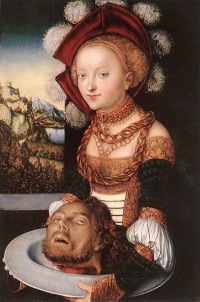Hungary
From The Art and Popular Culture Encyclopedia
| Revision as of 09:05, 12 July 2023 Jahsonic (Talk | contribs) ← Previous diff |
Revision as of 09:07, 12 July 2023 Jahsonic (Talk | contribs) Next diff → |
||
| Line 62: | Line 62: | ||
| ==See also== | ==See also== | ||
| * [[Hungarian Uprising]] | * [[Hungarian Uprising]] | ||
| - | *[[LGBT rights in Hungary]] | + | *[[Budapest Pride ]] |
| {{GFDL}} | {{GFDL}} | ||
Revision as of 09:07, 12 July 2023


|
"To the left, on a rock nearer the railway, are the remains of the Cachticz, Hungar. Csejthe, once the residence of the infamous Elizabeth Báthory. The network of railways with which Hungary is now covered renders a visit to this highly-favoured country almost as easy and convenient as any tour of similar extent in Central Europe. The unadventurous traveller may therefore enter on the undertaking without misgiving, and will find his time well and pleasantly spent. Hungary is one of the countries of Europe with which nature has dealt most bountifully. The N. portion , intersected by the Carpathian Mts., possesses mineral treasures of every kind in abundance, from rock-salt to precious stones, as well as an inexhaustible supply of timber." --Southern Germany and Austria, Including Hungary and Transylvania (1883) |
|
Related e |
|
Featured: |
The Republic of Hungary is a landlocked country in Central Europe, bordered by Austria, Slovakia, Ukraine, Romania, Serbia, Croatia and Slovenia. Its capital is Budapest.
Contents |
Culture
The culture of Hungary is rich and varied, from the twin cities of Buda and Pest on the Danube, to the Great Plain bordering Ukraine. Today's Hungary was formerly (until 1918) part of the Austro-Hungarian empire. Hungary has great folk traditions, producing embroideries, pottery, decorated buildings, and carvings. Hungarian music ranges from the rhapsodies of Franz Liszt to Roma and folk music.
Then there are the Hungarian Dances.
Literature
Hungary has a great literature, with many poets and writers, although not many are well known abroad due to the limited prevalence of the Hungarian language as a Finno-Ugric language. Some noted authors include Sándor Márai and Imre Kertész, who have been gaining acclaim in recent decades.
While virtually unknown in the Anglosphere for centuries, Hungary's literature gained renown by the end of the 20th century thanks to a new wave of internationally accessible writers like Antal Szerb, Sándor Márai, Imre Kertész and Magda Szabó.
See also Frigyes Karinthy.
Cuisine
Hungarian cuisine includes many pork and beef dishes, particularly goulash (a beef soup – gulya means a herd of cows, gulyás is like 'cowboy'), or a stew known in Hungarian as pörkölt. Dishes are often flavoured with paprika.
Music
The music of Hungary consists mainly of traditional Hungarian folk music and music by prominent composers such as Ferenc Liszt (known in the West as Franz Liszt), Bartók and Rózsa. Traditional Hungarian music tends to have a strong dactylic rhythm, as in the Hungarian language the first syllable of each word is invariably stressed. Hungary also has a number of internationally renowned composers of contemporary classical music, including György Ligeti, György Kurtág and Zoltán Jeney, among others.
Photography
Famous for being famous
Art
Cinema
Social sciences
Architecture
See also

